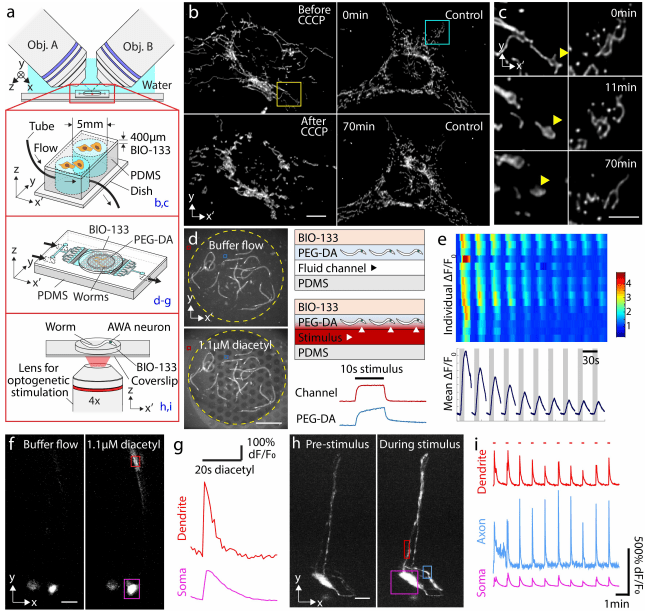New preprint on a refractive-index-matched polymer for better light sheet imaging
Our collaborative effort with Hari Shroff at NIH and AcuityNano to characterize a new embedding polymer for live and fixed samples with much better image quality is out, here: https://www.biorxiv.org/content/10.1101/2020.10.04.324996v1
Getting great 3D imaging of live samples in a light sheet system requires refractive-index-matched materials, typically close to water (n = 1.333), but many embedding polymers are a bit off, resulting in aberrations that lower image quality and sharpness. We published a PEG-based hydrogel method a few years ago (Burnett et al., 2018), which works well and allows chemical stimulation with aqueous solutions. Here, we use a fluoropolymer (BIO-133) and show that it produces excellent 3D images, can safely embed living cells and organisms, and can be formed into microfluidic networks for precise stimulation. We show examples of fixed specimen and living, dynamic processes in mammalian cells, fly wings, and nematode neurons.
Great job, Hamilton and collaborators!

